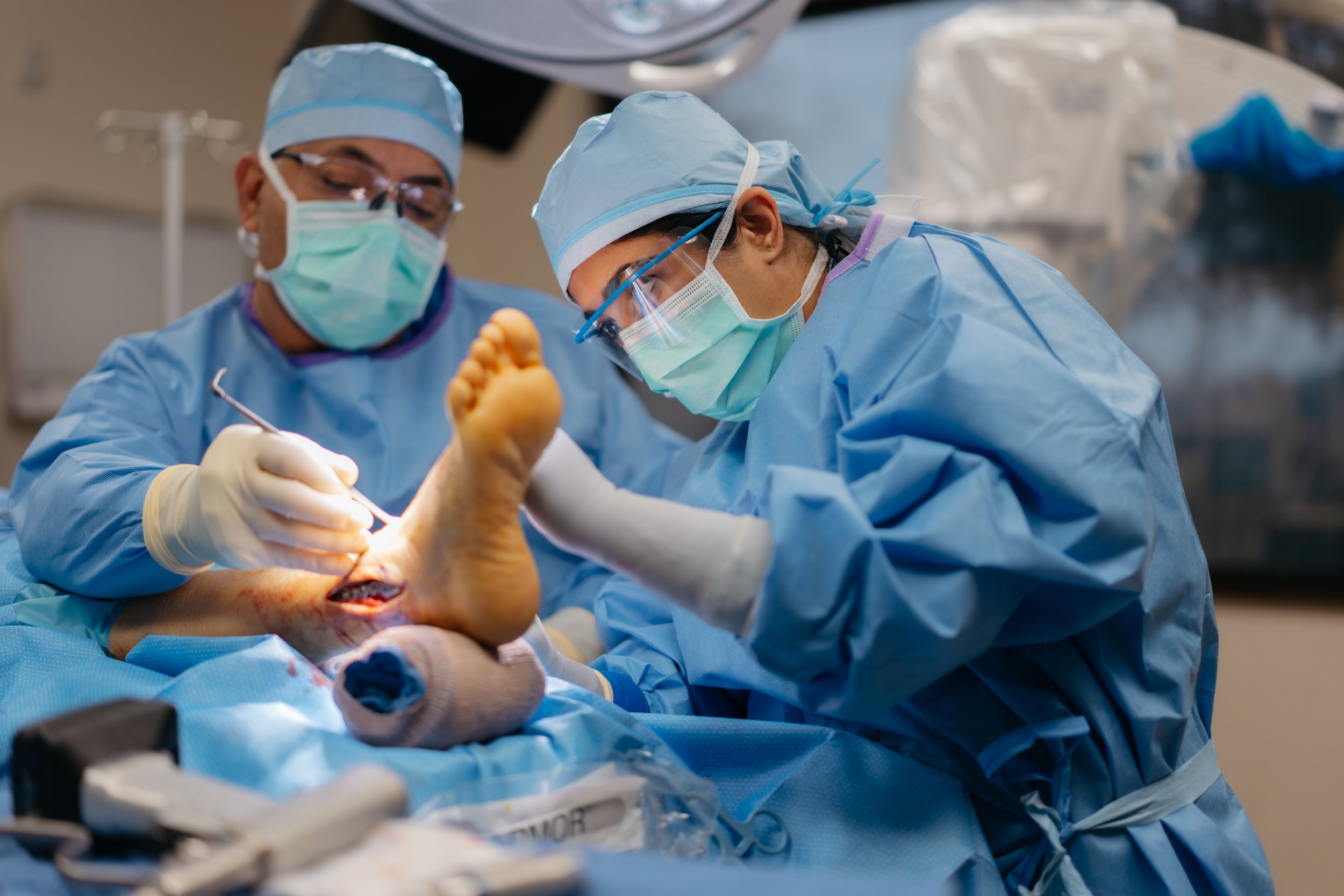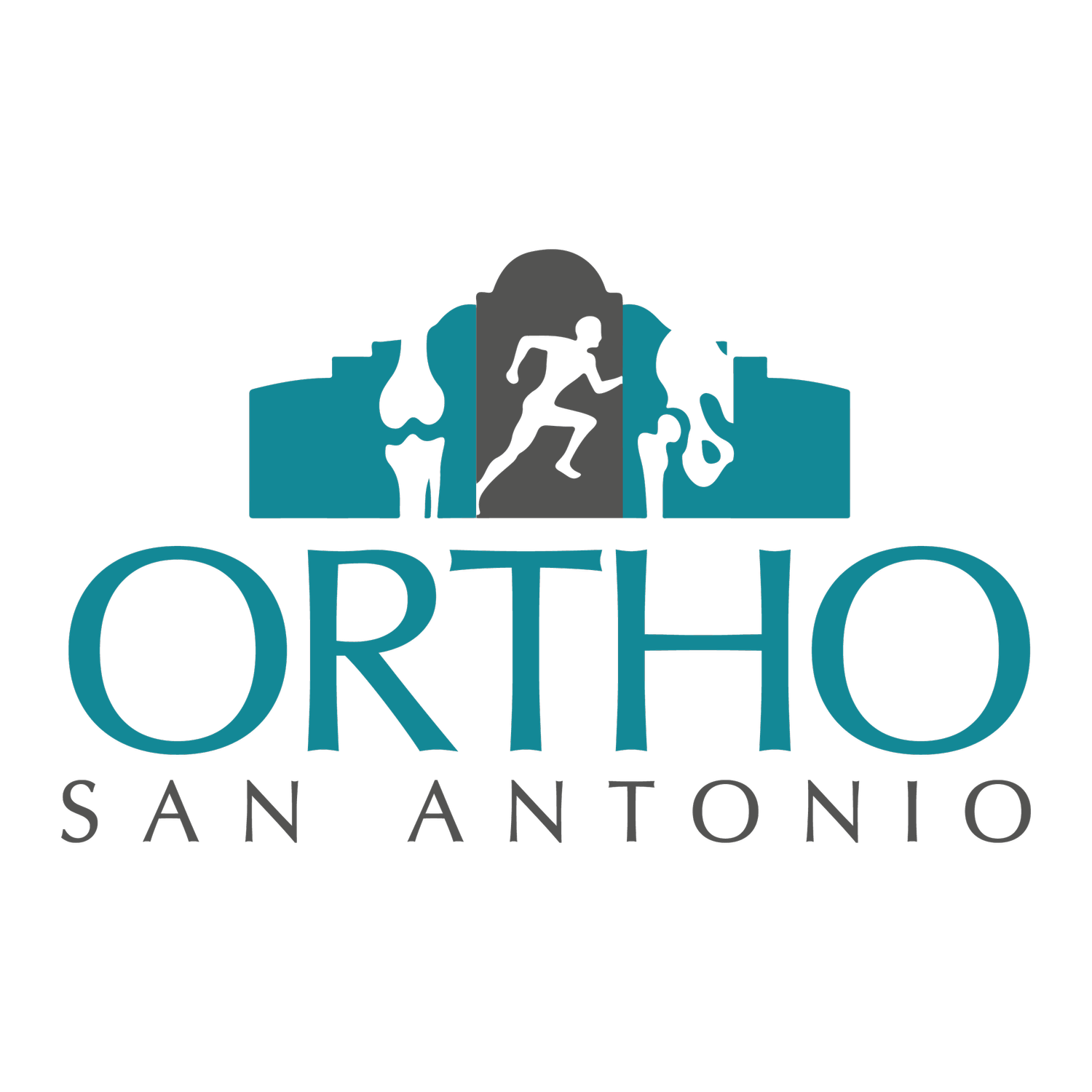
minimally invasive Bunion surgery in SAN ANTONIO
What is minimally invasive Bunion Surgery?
Minimally invasive bunion surgery, also known as keyhole bunion surgery, is a procedure to treat a foot condition called a bunion or hallux valgus. During minimally invasive bunion surgery, a few small incisions are made to access the bone around the bunion, as opposed to a much larger incision made during an open bunion surgery that cuts across layers of tissue around the bone, causing more postoperative pain, a larger scar, and damage to the surrounding soft tissues.
A bunion is an enlargement of bone or soft tissue around the joint at the base of the big toe, resulting in the formation of a bump. The bone that joins the big toe with the first metatarsal bone thickens and enlarges, tightening the tendons. This, in turn, causes the base of the big toe to angle outward, resulting in a painful deformity.
The main objective of minimally invasive bunion surgery is to realign the joint, correct the deformity, and to relieve pain and discomfort with minimal complications.
who is a good candidate for minimally invasive bunion surgery?
You are a good candidate if you exhibit the following signs and symptoms:
Significant foot pain that limits your activities of daily living (ADL)
Chronic inflammation and swelling of the big toe that does not improve with medication or rest
Deformity of the big toe: a drifting in of the big toe toward the smaller toes
Toe stiffness: the inability to straighten or bend the big toe
Failure to obtain pain relief with changes in footwear
Unsuccessful treatment of pain with NSAIDs (nonsteroidal anti-inflammatory drugs)
Preparation for Minimally Invasive Bunion Surgery
Preoperative preparation for minimally invasive bunion surgery involves the following:
A thorough medical evaluation is performed by your doctor to check for any medical issues that could interfere with your surgery. If you have chronic illness or a medical condition, such as with the heart or lungs, you will need a preoperative medical clearance from your family physician.
Several preoperative tests, such as blood and urine tests, and other imaging such as chest x-rays and cardiograms may be ordered to check for any abnormalities.
Special foot X-rays may be ordered for planning your procedure as well as to assist in correcting the foot abnormality.
Make sure to inform your doctor of allergies to medications, anesthesia, or latex.
You should advise your doctor as to which medications, vitamins, or supplements you are taking.
Your doctor may advise you to refrain from certain medications or supplements such as blood thinners, NSAIDs, or vitamin E for several days prior to surgery.
You should not consume any solids or liquids at least 8 hours prior to surgery.
You should refrain from smoking, as tobacco affects blood circulation and increases the risk of complications.
Arrange for someone to drive you home, as you will not be able to drive yourself post surgery.
A written consent will be obtained from you after the surgical process has been explained in detail.
Procedure for Minimally Invasive Bunion Surgery
Minimally invasive bunion surgery is usually done as a same-day surgery with ankle-block anesthesia that numbs only the foot, so that you are awake throughout the procedure. The procedure will involve the following steps:
The skin over the bunion is cleaned with an antiseptic solution.
A few tiny keyhole incisions are made with the aid of specialized instruments to access the bone around the bunion.
Through the small incisions, specially-designed instruments are inserted to cut the abnormal bone growth and release the soft tissue, enabling realignment of the big toe joint.
Your surgeon may remove portions of bone, ligament, and tendon in the affected foot, based on the severity of the bunion.
The incisions are closed with stitches and a sterile dressing is applied.
Postoperative Care and Instructions
The general postoperative care and instructions involve:
You will be transferred to the recovery area for monitoring.
Your nurse will measure your blood pressure and heart rate and other vital signs as you recover.
You will be encouraged to get up and walk as frequently as possible to prevent blood clot formation.
Keep your foot elevated as much as possible for the first few days after surgery, and apply ice as advised to relieve pain and swelling.
For the first couple of weeks, you will require a surgical boot or cast to protect your foot. Orthotic supports or insoles are also advised for additional comfort.
You can expect some pain and swelling in the foot. Pain-relief medications will be prescribed as needed.
Instructions on a diet rich in Vitamin D and C will be provided to promote bone healing.
Physical therapy and an exercise regimen will be gradually started to enhance range of motion and help strengthen the foot muscles.
Instructions on surgical site care, driving, and bathing will be provided.
Patients can usually bear weight immediately following the procedure in a surgical shoe. However, return to normal activities may take 6 to 8 weeks and return to sports activities may take 10 to 12 weeks.
You should strictly adhere to all scheduled follow-up appointments to monitor your progress.
Benefits of Minimally Invasive Bunion Surgery
Some of the benefits of minimally invasive bunion surgery include:
Minimal post-surgical pain
Less scarring
Minimal swelling
Faster recovery
Small incisions
Minimal stiffness in the big toe
Risks and Complications of Minimally Invasive Bunion Surgery
Minimally invasive bunion surgery is a relatively safe procedure; however, as with any surgery, there may be some minor risks and complications, such as:
Pain
Discomfort when walking
Swelling
Infection
Anesthetic complications
Damage to nerves and blood vessels
Blood clots
Our Locations
-

Alamo Heights
Address: 423 Treeline Park, Suite 350, San Antonio, TX 78209
-

Westover Hills
Address: 11212 State Highway 151, Medical Plaza 1, 2nd Floor, Suite 200, San Antonio, TX 78251
-

Medical Center
ADDRESS: 2833 Babcock Rd, Tower 2, Suite 435, San Antonio, TX 78229
-

Boerne
ADDRESS: 138 Old San Antonio Rd, Suite 302, Boerne, TX 78006
-

Southside
8726 Poteet Jourdanton Fwy Acc Rd, San Antonio, TX 78224
-

Castroville
-

Schertz
Address: 6051 FM 3009, Suite 260, Schertz, TX 78154
Meet Our Foot & Ankle Specialists
Shumaila Sarfani, MD
Board-Certified & Fellowship-Trained Foot & Ankle Orthopedic Specialist
Kathren Mccarty, DPM
Board-Certified Podiatric Foot & Ankle Surgeon



